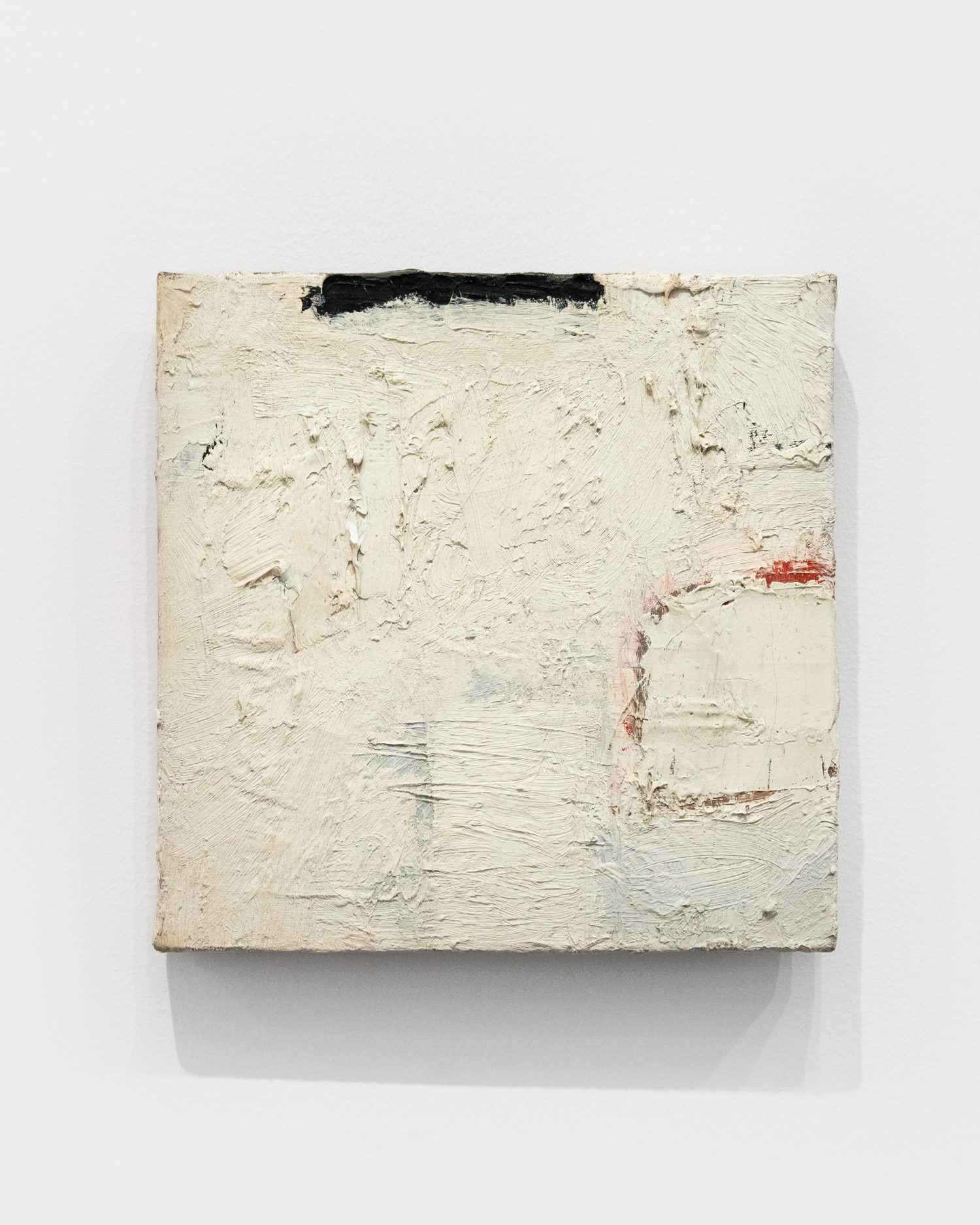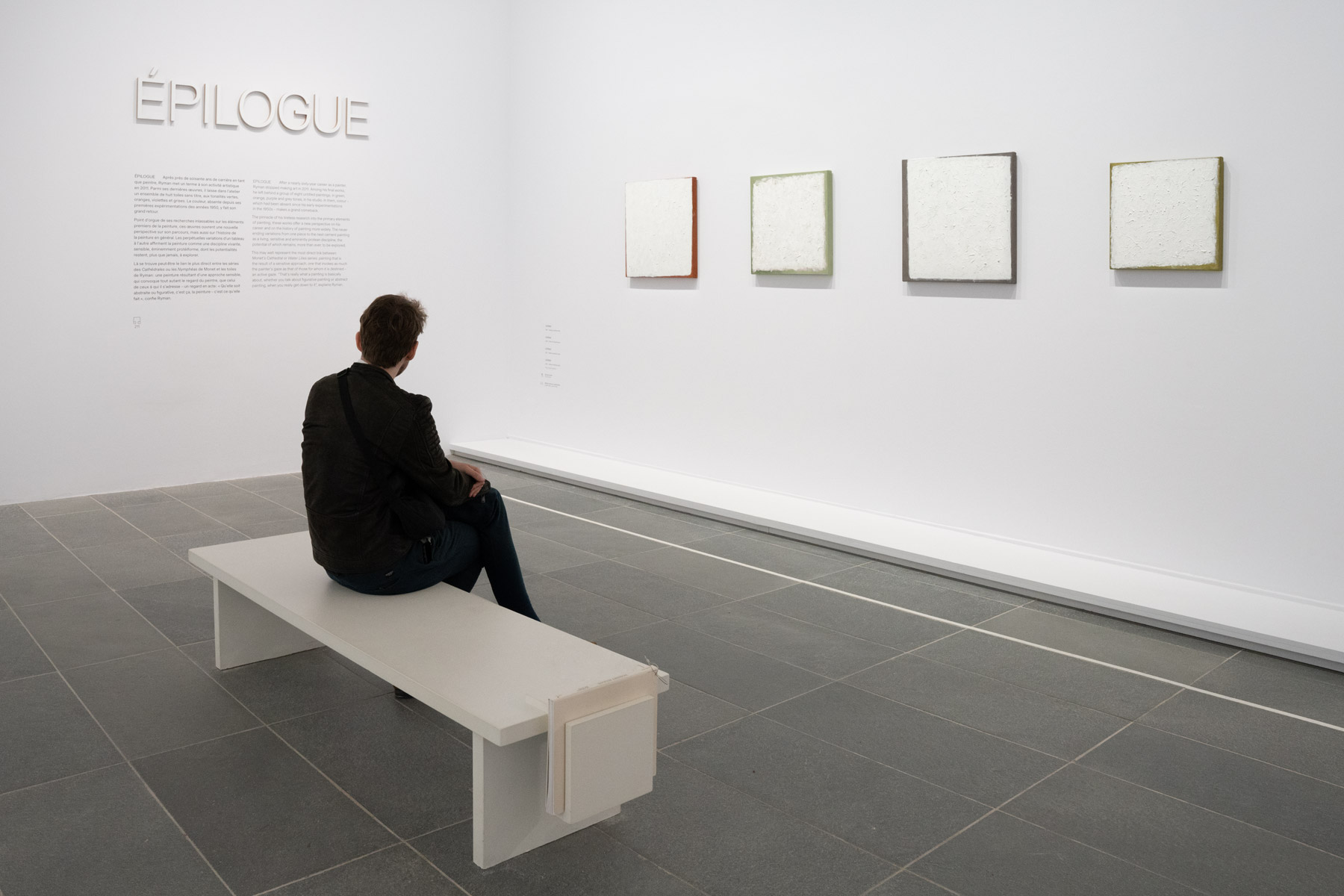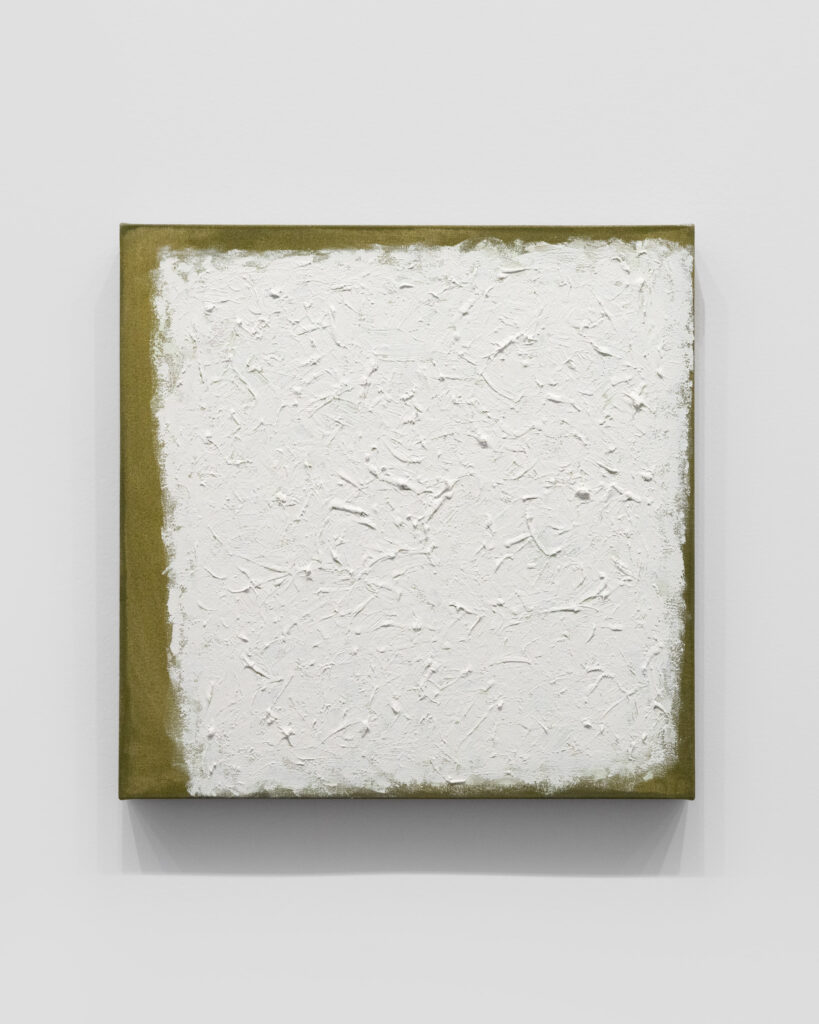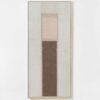On my last visit to Paris, at the end of May, I had the pleasure of visiting the exhibition “Le regard en acte (The Act of Looking)” by Robert Ryman at the Musée de l’Orangerie. Once again it was raining in Paris on this weekend. We arrived at the museum cold and soaked. It was crowded on this uncomfortable Saturday morning. But when we entered the exhibition, the feeling of being rushed disappeared, as there were only a few other people in the exhibition. Completely unjustified in my personal opinion, yet to our advantage on this hectic morning, as it allowed us to enjoy this special show almost by ourselves.
The retrospective is the first major museum presentation of Ryman’s work in France since 1981. The Musée de l’Orangerie is primarily known for its impressive collection of Impressionist and Post-Impressionist art, such as Claude Monet’s famous Water Lilies (Nymphéas). However, with special exhibitions such as “Le regard en acte”, it offers a unique opportunity to explore the diversity and depth of artistic expression beyond the well-known collection.
Robert Ryman was an American artist who is best known for his lifelong exploration of the color white. He pushed the boundaries of visual experience and focused heavily on the materiality and sensory quality of his works. Born in Nashville, Tennessee in 1930, Ryman’s original dream was to become a jazz musician. At the age of 22, he moved to New York to pursue his music career. At the time, he was working as a security guard at the Museum of Modern Art. There he came into close contact with modern art and artists such as Matisse, Cézanne and Rothko, leaving a profound impression on him. These experiences ultimately led him to abandon his passion for music and devote himself entirely to art.
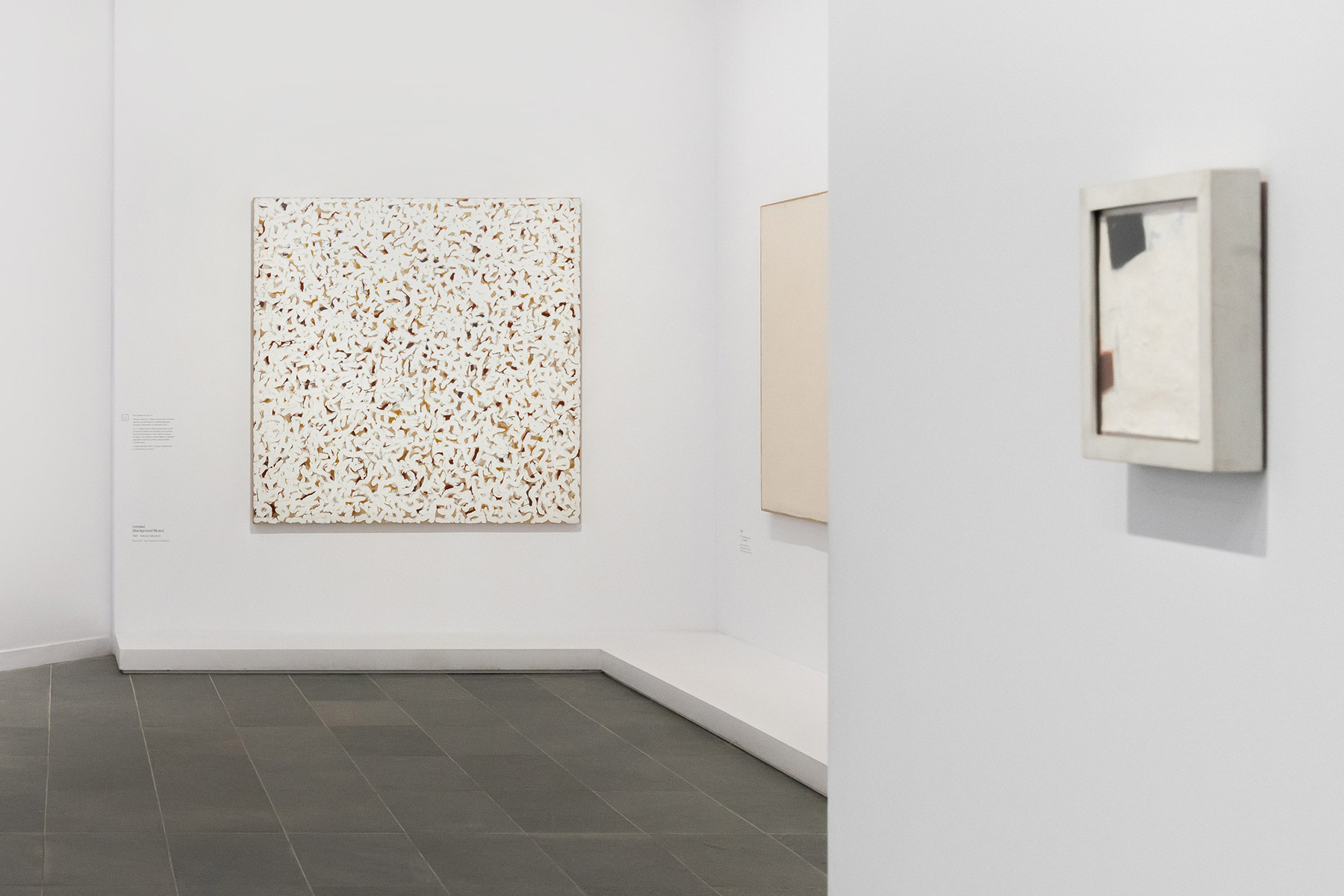
Right at the beginning of the exhibition, I was immediately captivated by a small-format, untitled painting from 1959 (see image above): the work, measuring just 21 x 21 cm, is characterized by various shades of white. In the middle of the upper edge, slightly offset to the left, there is a black horizontal stripe; further down on the right, subtle traces of red can be seen through the rough surface. The composition appears raw and authentic. Its depth and complexity invite me to linger longer and explore the different nuances.
I notice that the retrospective avoids a strict chronological order and instead focuses on thematic core elements of Ryman’s work: surface, limit, space, light and duration. Quotes from Ryman such as: “I don’t think of my painting as abstract because I don’t abstract from anything.” (2006) are depicted on the walls and offer an in-depth insight into his philosophy. What particularly fascinated me about the exhibition was the direct effect Ryman’s works had on me as a viewer. I must confess that I had only seen much of his work on the screen, so it was surprising for me to see that many of his paintings were smaller or larger than I imagined.
Freedom through reduction
But why the color white? In an interesting interview with Art21, Ryman talks about the reasons for his white square works and the role that the surface of a painting plays in his work. Actually, it was never about the color white per se. For him, white uniquely had the ability to make things visible and to reveal nuances that are typically not perceptible with other colors. And indeed – his works are never truly pure white. Depending on the light, texture, environment, and background, white reflects and shimmers in many nuances. The reduction to one color did not mean a limitation for him, but rather freedom to experiment and find new approaches.
However, not only the color, but also the surface of a painting and its relationship to the wall on which it hangs was of central importance to Ryman. From this perspective, I found the work “Carrier” from 1979 particularly impressive (see image below). The almost rough brushstrokes give the surface a uniquely changeable quality that appears different depending on the perspective.
I don’t think of my painting as abstract because I don’t abstract from anything.
Robert Ryman
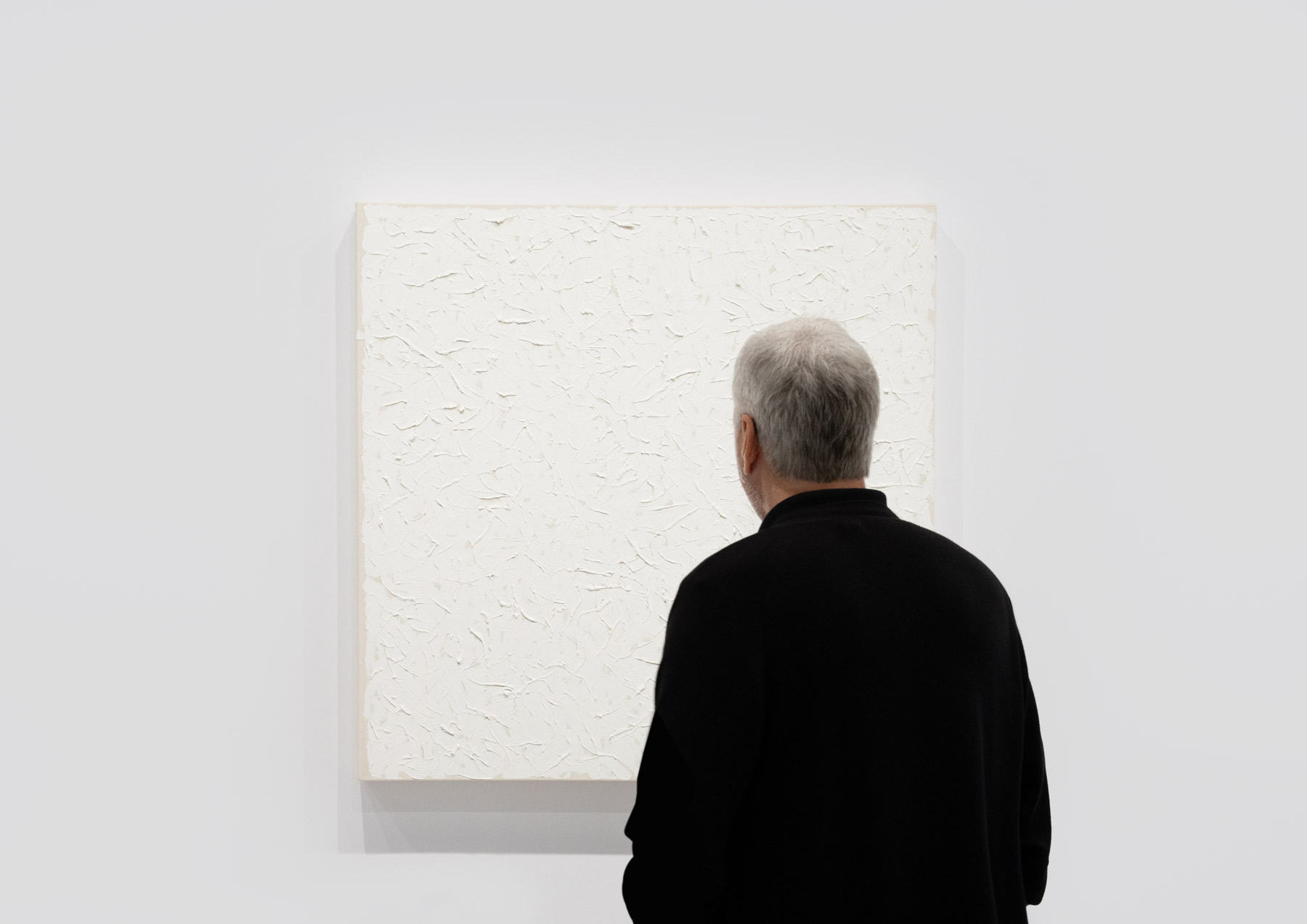
Ryman was often classified as a Minimalist, but he preferred to call himself a “realist”. It was important to him not to alienate the materials he used, but to depict them in their authentic state. Even the titles of his works, which are often general terms or the names of art materials or manufacturers, held no deeper meaning for him but served him merely for identification.
In the final room of the exhibition, his so-called “Last Paintings” are displayed, a group of eight square works created between 2010 and 2011. After nearly 60 years as a painter, Robert Ryman stopped making art in 2011. In these special works, color, which had not appeared since his early experiments in the 1950s, makes a grand comeback. I returned to this room repeatedly, sat on the bench, and contemplated them. The textures and color nuances of the surfaces harmonize perfectly with the subtle hues at the edges of the paintings. Brushstrokes are sometimes gentler, sometimes stronger, framed by the differently colored edges. They seem to embrace the works, as if wanting to protect the purity of the white.
During my visit, I realized once again that it takes a calm mind to engage with Ryman’s work. To consciously stop. To consciously pause. And to consciously see. Just as the title of the exhibition suggests. What is revealed in this “act of seeing” is a true delight for any lover of art with a minimalist aesthetic.
The exhibition can be seen at the Musée de l’Orangerie until July 1st. If you are in Paris, you should definitely take the opportunity to visit this fascinating exhibition.
